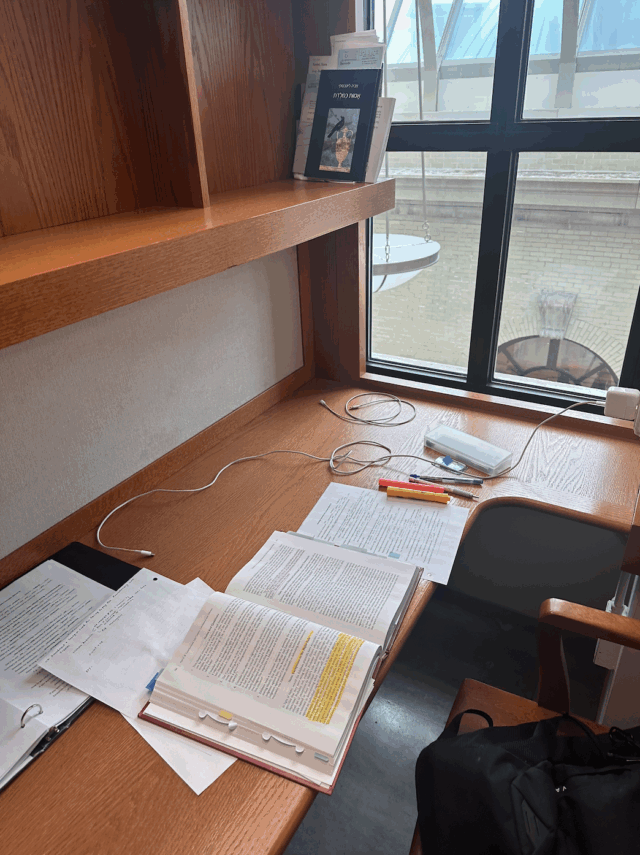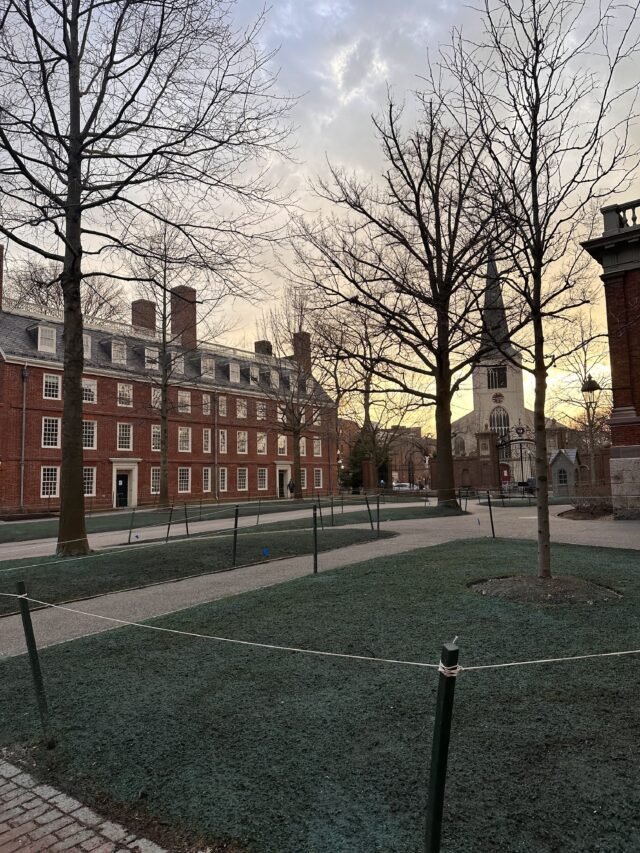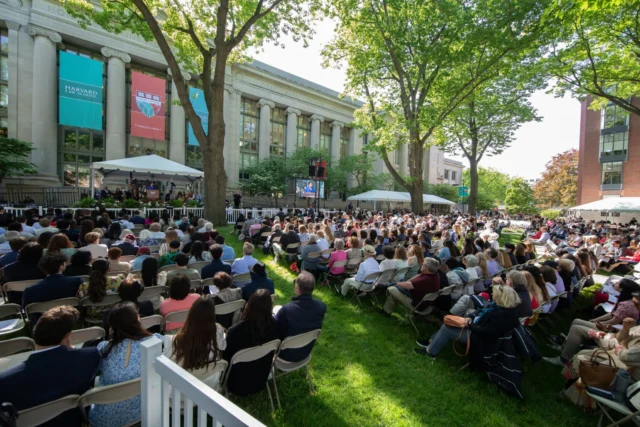Our Silence is for Sale?
How Law Firms make the Harvard Experience Possible
Roop Patel
May 23, 2025
“You will leave HLS prepared to impact a world that requires agile and adaptable leadership”
-Kristi L. Jobson, Assistant Dean for Admissions and Chief Admissions Officer at Harvard Law School
Harvard Law School is extraordinary. Students have the opportunity to take classes with some of the most brilliant legal scholars and peers. Without qualification, it is a privilege to learn from our peers and instructors at Harvard.
Yet, with graduation less than a few days away, my classmates at Harvard Law School and I can’t shake one feeling: that we were paid to stay silent and encouraged to stay distracted. Sometimes it feels as though we are brilliant marionettes controlled by technicality and fear. This feeling is especially apparent in student organization groups.
Student organizations at Harvard Law School aim to enhance the student experience. Most of the funding for these organizations comes from outside contributors—namely, law firm sponsors. Law firms, keen on recruiting and bolstering their reputations, subject student groups to implicit and explicit expectations when they fund events. Firms are increasingly influencing Harvard Law School through student groups, raising concerns about student group integrity. The infrastructure to bring up these concerns is perfunctory at best.
It feels like we are drowning. In the mindset of academic expectations and the chaos of the world, we are constantly funding for the experience we were promised. Although we pay upwards of $80,000 in tuition, we are still expected to raise money. As we drown, law firms are the life rings that aid us and Harvard Law School encourages us to take. The cost of being saved, though, is our stifled submission to corporations who themselves are being silenced.
Student Organizations
There are approximately 1,990 law students and more than 100 student organization groups and journals at Harvard Law School. These organizations are meant to “enhance the law student experience.” Organizations include affinity and interest groups as well as professional organizations. The opportunities they provide are some of the reasons why students come to Harvard Law in the first place.
Aside from providing community, organizations and journals are what make the student experience possible for many students. Harvard estimates that the total indirect cost of attending HLS (on top of the $82,560 in tuition) is $38,690 for the 2025-2026 academic year. Of this, an estimated $1,700 goes to textbooks and other supplies per academic year. Unlike most other law schools across the United States, Harvard Law does not provide any form of scholarships outside of need-based aid.
With graduation less than a few days away, my classmates at Harvard Law School and I can’t shake one feeling: that we were paid to stay silent and encouraged to stay distracted. Sometimes it feels as though we are brilliant marionettes controlled by technicality and fear. This feeling is especially apparent in student organization groups.
Student organizations and journals are what make the law school experience possible. They are the entities that bring in lunchtime speakers and subsidize expensive but quintessential events like the $79.74 Barristers’ Ball tickets. Student organizations—like First Class (an affinity organization for first generation and low income students)—help provide costly textbooks and supplies for classes. Although they can be just an extracurricular they are also so much more. Simply put, student organizations help make it affordable to concentrate on studying. 
Student Organization Funding
Funding for student organization groups is opaque. Incoming students (myself included two years ago) often think Harvard Law pays for student organization events. Like me a 3L (who has asked to stay anonymous) commented that they thought student organizations were given the bulk of their funding from Harvard Law until they joined the leadership of an organization. “With how much we pay in tuition, I had assumed that our student organizations and practice groups were funded by our fees.”
The bulk of student organization funding comes from law firm sponsors.
To be clear, some funding does come from Harvard. For the past two years, Harvard allocated approximately $160,000 to the Student Government Association to disseminate. However, this funding is not nearly enough.
Student Organizations are under the purview of the Office of Community Engagement, Equity, and Belonging (CEEB). The allocation of the $160,000 is done by the Student Government Association (separate organization made up of students).
The Student Government Association—at the direction of the Director of Student Organizations—form a Funding Board made up of student government association members and three other students who apply to be on the Board. The Board meets to disseminate the allocated $160,000. Each organization must apply for the funding prior to the dissemination meeting. Once organizations make their funding request, the Board, often joined by an administration member from CEEB to make sure things stay “above board,” meet to allocate funds to the organizations that apply.
This year, the application for funding opened on February 27 and closed on March 21. Shortly after the meeting, the outgoing Director of Student Organizations sent an email to student organization leaders. According to that email, “66 organizations requested a combined $278,600” for the 2025-2026 academic year. The Board awarded allocation based on a number of factors including the “number of members and events held, and the breadth and impact of the organization on campus community.” In theory and on paper, this is a great system.
Notably, a number of affinity groups opt not to apply for funding because of how little they are given compared to how much work it takes to complete the application. The process is painstaking.
Although the amount of money allocated to each organization is not made public, even if we were to assume that each organization received $2,500, that amount does little to cover operating expenses—especially considering the cost of living in Cambridge, Massachusetts. Plus, in order to use certain rooms, student organizations have to use Harvard caterers, whose services are pricey.
With this many students and so little funding from the school, the bulk of student organization group funding comes from external sources—namely, law firms.

Image taken by Roop Patel
How Law Firms Fund the Student Experience
Much of the funding for student organizations comes from law firms. For example, one student organization with nearly 400 active members received an allocation award of $2,500 this year. This was approximately 200% less than the requested amount. Importantly though, the $2,000 represents less than 3% of the projected yearly operating cost for the organization. Further, during the 2024-2025 year, nearly $3,000 alone went to academic events. An estimated 97% of funding comes from law firm sponsors.
A 3L who has requested to stay anonymous, commented that “It feels like the school takes pride in its robust student organizations and all that they do but when it comes to actually supporting them, many organizations are told to look to firms for the sponsorships and funding required to put up their events.”
Every year, student organization groups solicit funding from outside contributors.These contributors get something in return. The firms that sponsor organizations provide funding in exchange for events, access to first-year students, and goodwill.
When asked about how funding influences their student organization, one former president anonymously commented:
“Most firms want something in return for sponsorship. To attract sponsors, we offer them opportunities to attend our events and speak to our members. This changes the nature of our events, converting them from social opportunities for our members to recruiting events where students feel pressure to perform.”
This level of control is especially effective given that many Harvard Law Students go into Big Law after graduation. In years past, Harvard Law policies made it so that firms had to follow a timeline to recruit Harvard Students. Recently, however, firms have been ignoring policies because they know they can.
The total amount that any one organization gets is not public. However, it is impossible to miss the impact of firm sponsorships. Even to outsiders, the impact is readily apparent though the publicly available Harvard Law School Events Calendar.
The Harvard Law School Events Calendar displays all the events available to the general Harvard Law School student body. Many organizations hold events in addition to these. During February 2025 for example, there were approximately 268 events advertised on the calendar. Of these events, around 20% catered to law firm recruiting. Others—such as General Body Meetings and Subcites for Journals—made clear that they were sponsored by a large firm.
A 3L who has requested to stay anonymous, commented that “It feels like the school takes pride in its robust student organizations and all that they do but when it comes to actually supporting them, many organizations are told to look to firms for the sponsorships and funding required to put up their events.”
These sponsorships matter immensely to the viability of student organizations. Considering that most of the funding comes from firms, students are sure to fill events at the request of corporate sponsors. Additionally, smaller organizations and journals who are not given or do not take firm funding often function by requesting co-sponsorships from larger organizations.
The experience of being a law student is more than just that of attending class. Since our profession is about networking, and considering that most networking events are not free, our school becomes quasi-pay-to-play.
The funding process is taxing to students both in terms of needing to understand firm politics and also in terms of how much work goes into requesting funding.
For sponsorships, typically in late summer and early fall, the treasurers and leaderships of various organizations reach out to Big Law Firms and send over a Sponsorship Package. The Sponsorship packages are often individually and personally addressed. They include information about that student organization and various levels of sponsorship. For example, for one organization, firms can pay $2,000 for the lowest tier of the sponsorship package. The onus to fundraise is on students—often when they are also working or studying.
To be openly critical about a sponsor would be more than just a faux pas, it may be detrimental to the very infrastructure that makes a Harvard Law Degree an attainable reality. To speak up is to risk losing the few mechanisms that make our reality possible.

![[F]law School Episode 4: Public Interest Propaganda](https://theflaw.org/wp-content/uploads/2024/05/HERO_OBERMEYER-640x427.jpeg)
![[F]law School Episode 8: Selling Harvard Law Students](https://theflaw.org/wp-content/uploads/2024/09/Screenshot-2024-09-08-at-9.59.54 AM-640x427.png)






